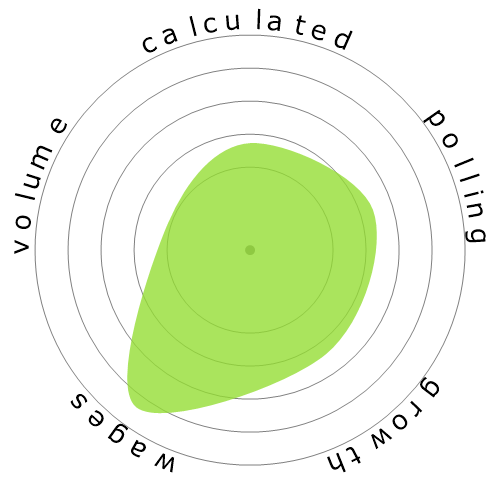Commercial Pilots




People also viewed
Calculated automation risk
Moderate Risk (41-60%): Occupations with a moderate risk of automation usually involve routine tasks but still require some human judgment and interaction.
More information on what this score is, and how it is calculated is available here.
User poll
Our visitors have voted there's a low chance this occupation will be automated. However, the automation risk level we have generated suggests a higher chance of automation: 55% chance of automation.
What do you think the risk of automation is?
What is the likelihood that Commercial Pilots will be replaced by robots or artificial intelligence within the next 20 years?
Sentiment
The following graph is included wherever there is a substantial amount of votes to render meaningful data. These visual representations display user poll results over time, providing a significant indication of sentiment trends.
Sentiment over time (quarterly)
Sentiment over time (yearly)
Growth
The number of 'Commercial Pilots' job openings is expected to rise 5.7% by 2033
Total employment, and estimated job openings
Updated projections are due 09-2025.
Wages
In 2023, the median annual wage for 'Commercial Pilots' was $113,080, or $54 per hour
'Commercial Pilots' were paid 135.3% higher than the national median wage, which stood at $48,060
Wages over time
Volume
As of 2023 there were 52,750 people employed as 'Commercial Pilots' within the United States.
This represents around < 0.001% of the employed workforce across the country
Put another way, around 1 in 2 thousand people are employed as 'Commercial Pilots'.
Job description
Pilot and navigate the flight of fixed-wing aircraft on nonscheduled air carrier routes, or helicopters. Requires Commercial Pilot certificate. Includes charter pilots with similar certification, and air ambulance and air tour pilots. Excludes regional, national, and international airline pilots.
SOC Code: 53-2012.00


Comments
Leave a comment
Passenger airlines no chance in 20 years
Cargo would be the first
Pilot unions are very strong
Single pilot flights are possible with a copilot remote as needed.
have to be 1000% reliable in order to not cause problems
can scare public away
Examples like TACA Flight 110, where a Boeing 737-300 lost both engines, show this. Instead of following the manual and returning, the pilots landed on the grass ahead, which was the right decision. This applies to many situations. In the case of United Airlines Flight 232, it's another example. Following the correct protocols isn't always the right choice and can sometimes prevent worse tragedies.
In the United case, let's suppose an AI is in command and the plane loses all three hydraulic systems. The company's manual doesn't cover a situation where all engines are lost. At that moment, what would the AI do? Even if it follows the tower controller's voice commands correctly, it’s impossible to determine the flight's fate because there's no human inside. However, this isn't to say that following protocols is always wrong. It’s just a reminder to follow protocols, but if you ever need to break them, it should be in a life-or-death situation.
Many of those airframes are going to be in service for the next fifteen to twenty years plus.
What you may see in the next decade or so is a reduction in the number of pilots required by the industry overall if single pilot in the cruise becomes allowable on Long Haul Flights.
And ai would need to learn a lot of controls and would need precise management one small move and the ai is done.
Leave a reply about this occupation